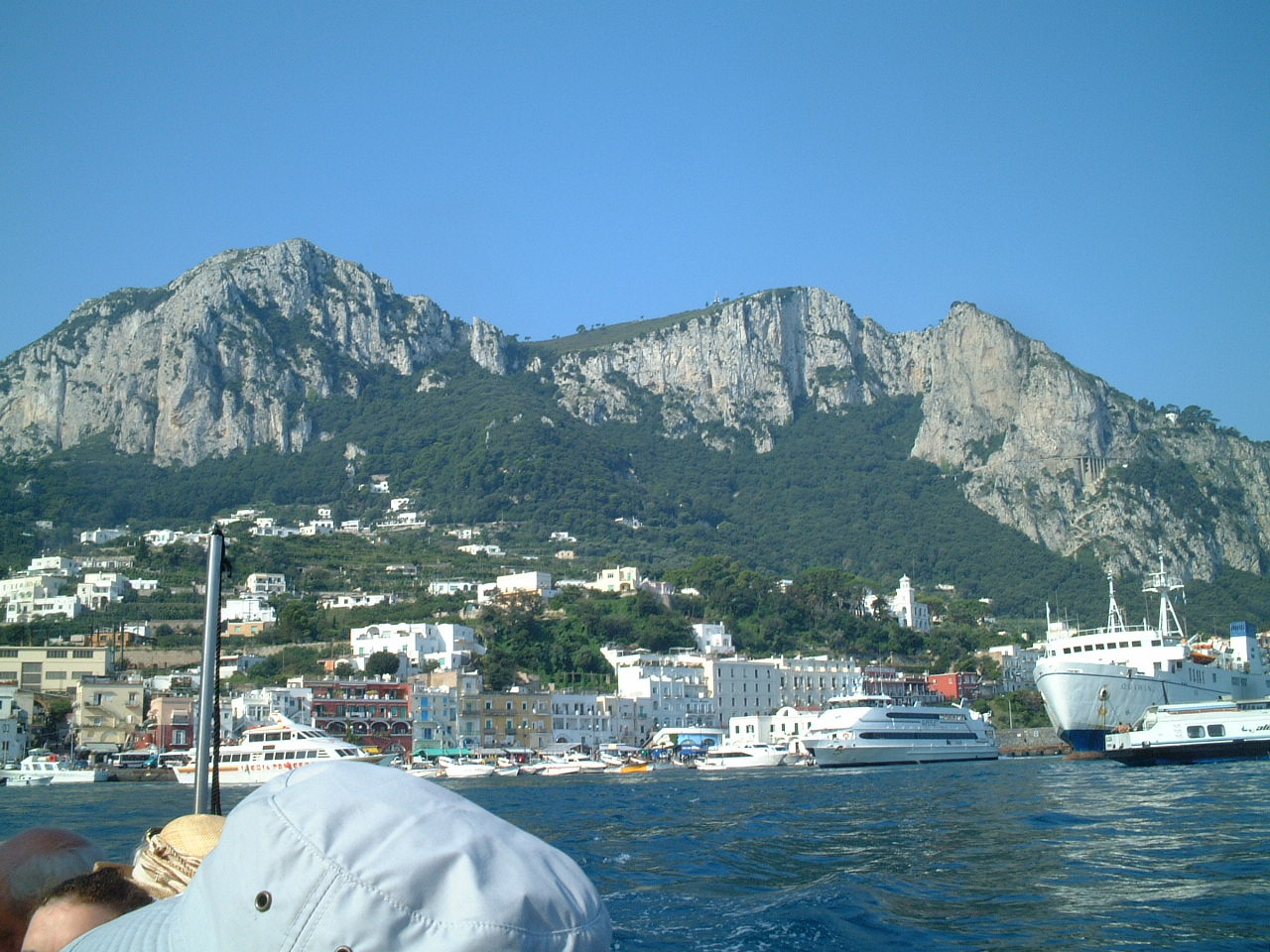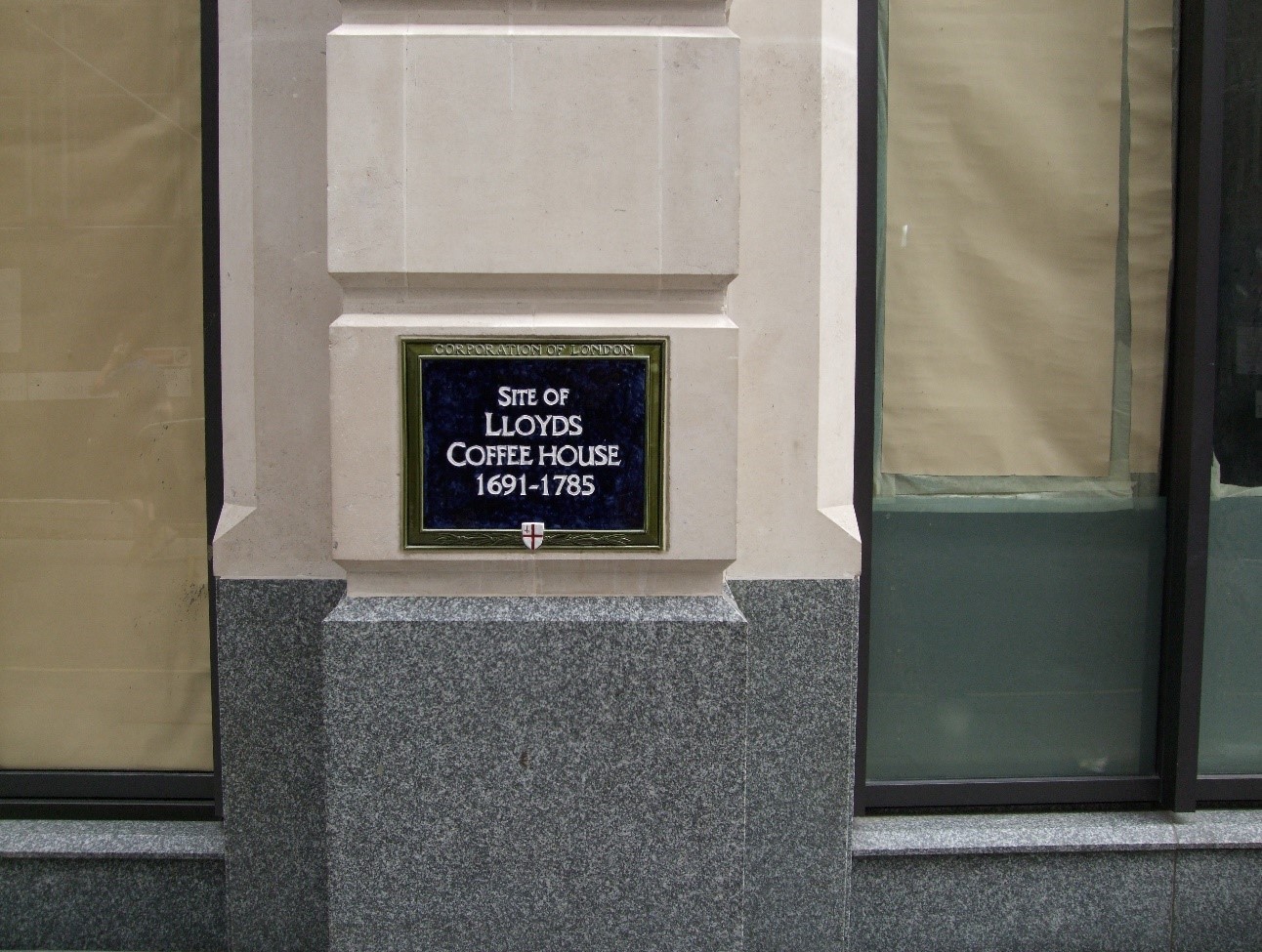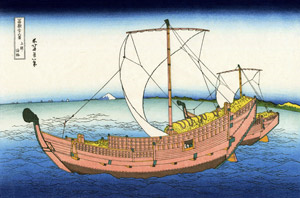リスク対応策 2020.08.01
RM41 損害保険の誕生(地中海交易)The Birth of Non-Life Insurance (Mediterranean Trading)
For those who prefer to read this column in English, the Japanese text is followed by a British English translation, so please scroll down to the bottom of the Japanese text.
損害保険発祥の地については、中近東、ギリシャ等の諸説があるが、いずれの説でもその発祥理由は「外国との貿易のため海上輸送をおこなった際に損害を被った荷物」に関するリスクヘッジ(回避)の手段として生成したというものであり、現在の海上保険に類するものがその起源と考えられている。
1939年(昭和14年)制定された我が国の保険業法は、1995年(平成7年)に全面改正され1996年(平成8年)成立したが、それ以来損害保険会社の名称に「○○損害保険」と「損害保険」の名称を付することができるようになった。しかし、それ以前は当該損害保険会社の主たる第1の事業を1番目に、次の事業を2番目に付することとなっていた。
そのため、「企業保険分野」を主たる目的として設立された損害保険会社、例えば現東京海上日動火災の旧称、東京海上火災、また旧三井海上、旧住友海上は、「海上」を1番目に付し、「個人保険分野」を主たる目的として設立された損害保険会社は、今では家計保険の筆頭は自動車保険であるが、太平洋戦争前それは火災保険であったため、損保ジャパンの旧称、安田火災海上、また東京海上火災と合併した日動火災海上のように「火災」が1番目に付されている。このように、名称(旧称)からも、損害保険会社の設立の淵源を知ることができるのである。

1.損害保険の誕生
現在ではリスクに応じて様々に細分化された損害保険商品が存在するが、冒頭の通り、損害保険の起源は「海上運送中の貨物に関するリスクヘッジの手段」、現在の海上保険に該当するものと言われている。「海上保険」は、14世紀のイタリアでほぼ完成したと言われているが、その萌芽は、12~13世紀にイタリアを中心とした地中海交易で使われていた「冒険貸借」というものであると言われている。
ただ、この「冒険貸借」は、現在の海上保険の仕組みとは、少し異なっている。海上保険では、交易をしたいと思っている貿易業者が、保険会社に対し保険料を支払い、万が一貨物を失った場合には、保険会社より損失金額の補償を受けるものである。
一方、冒険貸借は、物を仕入れて船を借り交易をしたいと思っている貿易業者が、資本家から貿易に必要な資金を借り受けることに始まり、航海が無事に終われば、貿易業者は、借りていた元金に利息を上乗せして資本家に返済するが、もし事故や海賊に遭って貨物が全損となった場合は、貿易業者は、借入金を資本家に返済することを免除された仕組みであった。
その意味で、冒険貸借で資金を提供した資本家は、保険会社というよりは、現代のベンチャーキャピタルに近い存在と考えることができる。
その為もあってか、航海が無事に終わった時に資本家に支払う利息は、1航海につき20%~30%と非常に高い金利であった。このことは、また当時の地中海交易は、リスクが高いが、成功すれば、いかに莫大な富みが得ることができるベンチャーであったかを窺い知れる証拠にもなっている。
このように、冒険貸借は「資金調達」と「危険負担」という2つの機能を果たしていたが、「海上保険の理論と実務」(木村栄一編:「弘文堂」刊)によると、1230年頃、「貸し借りで高利を受取ることはキリスト教の教えである隣人愛に反する」との考えから、ローマ法皇グレゴリオ9世によって徴利禁止令(=利息禁止令)が発令され、冒険貸借は禁止された。
しかし、交易をする以上、資金調達と危険負担は必須のものであり、徴利禁止令に抵触しない手法が様々に案出され、資金調達と危険負担を完全に分離して、冒頭述べたとおり、14世紀頃、冒険貸借から危険負担機能のみを取り出した、現在の海上保険の原型がイタリアで完成した。
今日、国際貿易で使用されているロンドン保険業者協会(Institute of London Underwriters)の「協会貨物約款(=海上貨物保険約款)」( ICC: Institute Cargo Clauses)にも大要が受け継がれているほど、当時の海上保険約款の完成度は非常に高く、その意味でも保険会社の安定経営に資するものであったことが想像できるものである。
2.損害保険の発展
筆者が、損害保険会社の経営コンサルタント時代から、ロンドンに出張する際、定宿にしているホテルは、ハイドパークに面し地下鉄「ランカスター・ゲート駅」の真上にある。毎朝、シティに向かう地下鉄「セントラルライン」に乗り、「バンク(Bank)駅」に向かった。到着して地上に上がると、目の前には2つの道がシティへ、その中心地でもあるロイズ(Lloyd’s of London)へと向かっている。ひとつは「Cornhill(コーンヒル)」であり、もう一つは「Lombard Street(ロンバード・ストリート)」である。

「ロンバード・ストリート」は、英国王エドワード1世(1272〜1307年)によって、イタリア北部のロンバルディア地方からの移民に与えられた土地の区画であったため、この名称が残されている。移民の多くは、金細工職人であったが、当時の最先進国であったイタリアからは、金融、そして保険の仕組みも、英国の地に伝わった。
このロンバード・ストリートは、400メートルほどでGracechurch street(グレースチャーチ・ストリート)にぶつかるところで終わり、その先は道を挟んでFenchurch street(フェンチャーチ・ストリート)に名前が変わる。ロンバード・ストリートの中程にあるのが、上記の写真にある「青いプレート」である、「ロイズ・コーヒーハウス(現ロイズ:Lloyd’s of London)が、1691年から1785年まであった場所を示す銘板」である。この地は英国、ロンドンの金融の中心地として、1980年代までは、英国に本拠を置くほとんどの銀行の本店、本社は、ロンバード・ストリートにあった。
初めてロイズの名前が文献に顕れたのは、「1688年2月発行の新聞、ガゼット紙」、その広告面であった。これが、歴史上初めて、保険業者としての「ロイズ(Lloyd’s of London)」の名前が現れたものであった。このようにして、当時の最先端のビジネスモデルであった、「金融」と「保険」が、ロンドンのシティ、ロンバード・ストリートを中心に成熟、発展、現在でもロンドンは「世界の損害保険の中心地」としての地位を保っているのである。
3.日本の損害保険の進展
日本には、平安時代や室町時代頃から、「義倉(ぎそう)」や「無尽(むじん)」と称する、「災害にあった時にお互いに助け合う相互扶助の仕組み」があった。小さな組織体であったが、明治時代に至ると、大規模な会社組織として営業をおこなう会社が多く現れるようになった。
しかし、「無尽」はあくまでも「資金的な相互扶助」が目的の組織体であって、多くの無尽が、後年、「相互銀行」に形態転換したところを見ても、「リスクに対して応分の対価を得て、損害が発生した際に応分の補償をおこなう」という「危険負担(=保険)」ではなく、「資金調達」の分野のものであった。

「危険負担」という面を見ると、日本でも海外と同様に、海上交易に関する「危険負担手段」が存在した。江戸時代の朱印船貿易では、船の安定度も低く、常に海難事故などの危険が付きまとっていたため、「抛金(なげかね)」という制度が考え出された。「冒険貸借」とよく似ていて、「1航海ごとに金融業者が証文に基づいて資金を融資して、航海が無事に終われば利子をつけて元金を返済するが、船が難破した場合は利子も元金も払わなくていいというもの」であった。
明治時代に入ると、日本に進出してきた外国保険会社により、1859年横浜で海上保険を中心とした損害保険業が始まった。また、1868年(慶応3年)福沢諭吉が「西洋旅案内」で「災難請合の事-インシュアランス-」と題して、現在の火災保険にあたる「火災請合」、海上保険にあたる「海上請合」を紹介した。
これらのことにより、1879年には、日本最初の海上保険会社となる東京海上保険(現・東京海上日動火災保険)が営業を開始、1888年には最初の火災保険会社となる東京火災保険会社(現・損害保険ジャパン)が営業を開始した。また、新しい保険分野として、自動車保険が 1914 年から発売が開始され、1970年代のモータリゼーションの急激な進展により、現在は損害保険会社の収入保険料の半分以上を占めるほどの規模になっている。世界的に見て、損害保険料の規模では、米国、中国、ドイツに続き世界第4位の規模となっている。
4.日本の損害保険の課題
世界的な再保険会社であるSwiss Re(スイス再保険)発行の機関誌「sigma(2017)」によると、世界147国と地域の合計で損害保険の元受収入保険料は、約229兆円(1ドル108.47円:2016年の平均為替レートによる)となっており、米国が約86兆円(世界全体の37.5%)、第2位が中国で約22兆円(世界全体の9.6%)、第3位がドイツで約13兆円(世界全体の5.7%)、日本は約12兆円(世界全体の5.5%)となっているが、対GDPで見ると、米国が約4.3%、ドイツが3.3%であるのに対して、日本は2.4%と少ない。これは、政府による労災保険制度の運営等も寄与していると考えられるが、一方、生命保険では、日本は米国に続き世界第2位で、世界全体の13.5%を占める「生命保険大国」というところからも、「保険=リスク対策への対価」という考え方ではなく、「保険=貯蓄」という考え方が根強く、損害保険の効用(=掛け捨てで「リスク対応策」)、そしてその理論的な背景であるリスクマネジメントに注目が向けられていないことを示すデータと考えることができる。
1996年、冒頭述べた「『保険業法』の全面改正」によって「保険ビッグバン」の名の下に、生命保険会社と損害保険会社の相互参入、料率・引受条件の緩和、自由化等の施策がおこなわれたが、それまで長らくおこなわれてきた「護送船団体制」の名残が強いためか、欧米で見るような、損害保険会社の特長を活かした損害保険商品を見ることは筆者の目には未だに少ないと映っている。こういう点からも、「欧米の先進の損害保険を日本に導入する手段としてのキャプティブ」の存在意義の大きさを感じている。
今回のまとめ
欧米にあるような、「得意の分野に集中して損害保険事業をおこなう、Mono Line(モノライン:単一種目)保険会社」が、「限られた補償範囲と低額の補償金額を提供する少額短期保険会社」を除いて、日本の市場には無く、「All Line(オールライン:全種目)営業」の保険会社ばかりが存在する保険市場が日本である。「専門店」ではなく「百貨店(デパート)」のみが保険を売っている市場である。無論、総合的に保険を販売するという事から得られる「企業体としての強度」は、「軸足が多いゆえにその強度・安定度は高い」と言える。
しかし、「限られた資本を投下する先を選択して集中する、つまりリスクを取るからこそ、高いリターン(収益)を得ることができる」、これは企業戦略の大命題であり、保険会社に限らず、どの企業でも選択と集中戦略として採用しているものである。保険会社にこの特長が無ければ、当然「得られるリターン(収益)」も、応分のものしか無い、そうすると事業収益の悪化を招き、収入である「保険料も高止まりせざるを得なくなる」のである。
それが、「補償範囲、そして保険料の内外価格差を産んでいる理由」である。筆者の経験では、特に地震保険の分野においては、それが顕著であると考えている。ここに、自社専用保険会社として、自社のリスクしか受けないキャプティブの存在意義、そしてキャプティブを設立する企業戦略上の意味があると言える。
自社のみのリスクを引き受けるからこそ、自社でリスクマネジメントを的確におこなっていけば、損害率の低下を招き、それが更に自社の収益に直接跳ね返って、大きなリターン(収益)となるのである。まさに、グローバル・リンクが推奨する、「Turning Risk to Profit®」(リスクの収益化)を実現することができる手段がキャプティブであると考える所以である。
English Translation
Risk Management 41 – The Birth of Non-Life Insurance (Mediterranean Trading)
There are various theories about the birthplace of non-life insurance in the Middle East, Greece, and elsewhere, but all the theories claim that it originated as a means of hedging (avoiding) the risk of “damaged goods transported by sea to trade with foreign countries,” and it is thought that the origin of non-life insurance is something similar to today’s marine insurance.
Japan’s Insurance Business Law, enacted in 1939 and fully revised in 1995, was enacted in 1996, and since then non-life insurance companies have been allowed to use the names “XX General Insurance” and “Non-Life Insurance” as their names. However, prior to that time, the main first business of the non-life insurance company in question was to be named first and the second business second.
As a result, non-life insurance companies established with the main purpose of “commercial line (corporate insurance)”, such as the former Tokio Marine & Fire Insurance Company, now Tokio Marine & Nichido Fire Insurance Company, as well as the former Mitsui Marine and Sumitomo Marine, had “marine” first, and non-life insurance companies established with the main purpose of “personal insurance”, are now leading household insurance companies with automobile insurance as their primary business. However, before the Pacific War, it was fire insurance, so the word “fire” was added to the company’s name, as in the former name of Sompo Japan, the Yasuda Fire and Marine Insurance Company, and the Nichido Fire and Marine Insurance Company which merged with the Tokio Marine & Fire Company. Thus, the name “Marine” or “Fire”, which came first is a good indication of the origins of non-life insurance companies.
1. The Birth of Non-Life Insurance
Nowadays, there are variously subdivided non-life insurance products depending on the risk, but as mentioned above, non-life insurance is said to have originated as “a means of hedging the risk of cargo in transit by sea”, which corresponds to today’s marine insurance. Marine insurance is said to have been almost perfected in Italy in the 14th century, but its germination is said to be the ” bottomry “(i.e., adventure lending and borrowing) that was used in the Mediterranean trade, mainly in Italy, in the 12th and 13th centuries.
However, this bottomry is slightly different from the current system of marine insurance. In marine insurance, traders wishing to trade would pay a premium to an insurance company, and if they lost their cargo, the insurance company would compensate them for the loss.
In bottomry, on the other hand, a trader who wants to buy goods and rent a ship to trade begins by borrowing money from a capitalist to finance his trade, and if the voyage is successfully completed, the trader repays the capitalist with the principal amount borrowed plus interest. The traders were exempted from repaying the capitalists for their loans.
In this sense, the capitalists who provided funds through bottomry can be considered more like modern venture capitalists than insurance companies.
Perhaps that is why the interest paid to the capitalist on the successful completion of a voyage was very high, between 20% and 30% per voyage. This is also evidence that Mediterranean trade at that time was a risky but, if successful, enormously lucrative venture.
Thus, bottomry fulfilled two functions, “financing” and “risk bearing,” but according to “Theory and Practice of Marine Insurance” (edited by Eiichi Kimura, published by Kobundo), around 1230, Pope Gregory IX, believing that “receiving high interest through lending and borrowing is contrary to the Christian teaching of love of neighbor”, The prohibition of interest collection (i.e., the prohibition of interest) was issued by Pope Gregory IX, and bottomry was forbidden.
However, in order to trade, financing and risk bearing were necessary, and various methods that did not conflict with the prohibition on interest collection were proposed, and around the 14th century, the prototype of the present-day marine insurance was completed in Italy, in which financing and risk bearing were completely separated and, as mentioned at the beginning of this column, only the risk bearing function was taken out of bottomry.
The Institute Cargo Clauses (ICC) of the Institute of London Underwriters, which is used in international trade today, is a continuation of the compendium of marine insurance policies of that time. It was a very high degree of perfection, and we can imagine that it contributed to the stable management of the insurance company.
2. Development of non-life insurance
Since my days as a management consultant for a non-life insurance company, I have stayed at the hotel above Lancaster Gate tube station facing Hyde Park whenever I travel to London on business. Every morning, I take the Central Line subway (Tube) to the City and head to Bank Station. There are two roads leading to the City and Lloyd’s of London, the heart of the City. One is Cornhill and the other is Lombard Street.
Lombard Street was a parcel of land granted by King Edward I of England (1272-1307) to immigrants from Lombardy in northern Italy, which is why it retains its name. Many of the immigrants were goldsmiths, but the Italians, the most developed nation of the time, also brought their financial and insurance systems to English soil.
This Lombard Street ends at about 400 metres where it meets Gracechurch street, which changes its name to Fenchurch street across the road. In the middle of Lombard Street is the blue plaque in the photo above, which marks the place where Lloyd’s Coffee House (now Lloyd’s of London) stood from 1691 to 1785. It was the financial center of London, England, and until the 1980s, the headquarters of most UK-based banks were located in Lombard Street.
The first time the name “Lloyds” appeared in the literature was on the front page of the “Gazette newspaper of February 1688”. This was the first time in history that the name ‘Lloyd’s of London’ appeared as an insurer. Thus, finance and insurance, the most advanced business models of the time, matured and developed around Lombard Street in the City of London, and even today London remains the world’s non-life insurance center.
3. Development of Non-Life Insurance in Japan
In Japan, since the Heian and Muromachi periods, there was a system of mutual aid called “Giso” or “Mujin,” which was a system of mutual assistance in times of disaster. The organization was small, but by the Meiji era (1868-1912), many companies began to operate on a large scale.
However, the objective of Mujin was to provide financial mutual aid, and many of them later converted to mutual banks, but they were not risk bearing organizations (i.e., insurance), which provided compensation for risk and compensation for damage, but rather were fund raising organizations. This was the field of “risk bearing”.
Looking at the aspect of “burden of risk,” there existed in Japan, as in other countries, a “means of risk bearing” in maritime trade. During the Edo period (1603-1867), the trade (‘Syu-in-sen) in red seal ships was less stable, and the risk of accidents at sea was always present, so the system of “Nagekane” was devised. It was similar to bottomry, in which lenders loaned money based on a certificate for each voyage, and if the voyage was completed successfully, the principal would be repaid with interest, but if the ship was wrecked, neither interest nor principal would be required.
In the Meiji period (1868-1912), foreign insurance companies that had entered the Japanese market launched a non-life insurance business in Yokohama in 1859, focusing on marine insurance. In 1868, Yukichi Fukuzawa, in his book “Guide to the West (Seiyo Tabi Annai),” wrote an article titled “Disaster Insurance” in the book, in which he introduced “fire insurance,” which is equivalent to today’s fire insurance, and “marine insurance,” which is equivalent to marine insurance.
As a result of these developments, the Tokyo Marine Insurance Company (now Tokio Marine & Nichido Fire Insurance Company), Japan’s first marine insurance company, began operations in 1879, followed by the Tokyo Fire Insurance Company (now Sompo Japan) in 1888, the first fire insurance company in Japan. In addition, a new segment of insurance, automobile insurance, was launched in 1914, and due to the rapid development of motorization in the 1970s, it now accounts for more than half of the premiums earned by non-life insurance companies. Globally, Japan is the world’s fourth largest non-life insurer in terms of premiums written, following the US, China, and Germany.
4. Challenges for P&C Insurance in Japan
According to sigma (2017), the journal published by global reinsurer Swiss Re, the world’s leading reinsurer, in total, primary premiums written for non-life insurance in 147 countries and territories were approximately ¥229 trillion (¥108.47 to the dollar; based on the average exchange rate in 2016), while the United States was worth approximately ¥86 trillion (37.5% of the world’s total), China ranked second with about ¥22 trillion (9.6% of the world’s total), Germany third with about ¥13 trillion (5.7% of the world’s total), and Japan third with about ¥12 trillion (5.5% of the world’s total), but in terms of GDP, the U.S. and Germany had about 4.3% and 3.3%, respectively, while Japan’s share was as low as 2.4%. However, in terms of percentage of GDP, Japan’s percentage is as low as 2.4%, compared to about 4.3% in the United States and 3.3% in Germany. The government’s administration of the workers’ compensation insurance system may have contributed to this low rate. The data can be considered to show that there is a persistent lack of attention to the utility of non-life insurance (i.e., a “risk response strategy” in terms of premiums) and its theoretical background, risk management.
In 1996, under the banner of the “Insurance Big Bang”, life and non-life insurers took measures to encourage mutual participation, relax premium rates and underwriting conditions, and liberalize their business practices, all in the name of the “insurance big bang” mentioned at the beginning of this report. In my eyes, it is still rare to see non-life insurance products that take advantage of the features of non-life insurance companies. From this point of view, I feel the significance of “captives as a means of introducing advanced P&C insurance from Europe and the United States to Japan”.
Summary of this issue
There are no “mono line (mono line) insurance companies that concentrate on their specialties” as there are in Europe and the U.S., except for “small short term insurance companies(i.e., “Shogaku Tanki”) that offer limited coverage and low amounts of coverage”, but there are only “all line” insurance companies in the Japanese market. This is a market where only department stores, not specialty stores, sell insurance. Of course, the strength of a company that sells insurance as a whole can be attributed to the fact that it has a large number of business units, making it a strong and stable company.
However, it is possible to obtain high returns by selecting and concentrating a limited amount of capital on a limited number of targets, in other words, by taking risks, which is a major proposition of corporate strategy. If an insurance company does not have this feature, the return (profit) will be only modest, which will lead to a decline in business profits, and premiums will remain high.
This is the reason for the price difference in coverage and premiums between Japan market and overseas’. In my experience, this is especially true in the field of earthquake insurance. Herein lies the raison d’être of a captive that only underwrites its own risks as its own exclusive insurer, and the corporate strategic significance of establishing a captive.
Because the company underwrites its own risks, if it manages its own risk appropriately, it will be able to reduce its loss ratio, which in turn will bounce directly back to the company’s bottom line, resulting in significant returns (profits). This is exactly why GLC believes that captives are the means to achieve the “Turning Risk to Profit®” recommended by GLC.
Author/translator: Shinichiro Hatani

